Ski: 2023-2024 Peak 104 by Bode, 184 cm
Test Location: Crested Butte Mountain Resort, CO
Days Skied: ~12
Available Lengths: 160, 168, 178, 184, 190 cm
Blister’s Measured Tip-to-Tail Length (straight-tape pull): 183 cm
Stated Weight per Ski: 2044 grams
Blister’s Measured Weight per Ski: 1990 & 2045 grams
Stated Dimensions: 135-104-123 mm
Blister’s Measured Dimensions: 134.2-103.6-122.1 mm
Stated Sidecut Radius (184 cm): 25 meters
Measured Tip & Tail Splay (ski decambered): 63 mm / 20 mm
Measured Traditional Camber Underfoot: 5 mm
Core Materials: poplar/paulownia + titanal (2 partial layers) + fiberglass laminate
Base: sintered
Factory Recommended Mount Point: -10 cm from center; 82.3 cm from tail
Boots Used: Tecnica Mach1 MV 130, Lange Shadow 130 LV, Lange Shadow 115 LV, Fischer Ranger 105 MV BOA
Bindings Used: Tyrolia Attack 13
Blister’s Measured Tip-to-Tail Length (straight-tape pull): 177 cm
Stated Weight per Ski: 1932 grams
Blister’s Measured Weight per Ski: 1908 & 1930 grams
Stated Dimensions: 135-104-123 mm
Blister’s Measured Dimensions: 133.7-103.5-122 mm
Stated Sidecut Radius (178 cm): 23.5 m
Measured Tip & Tail Splay (ski decambered): 63 mm / 19 mm
Measured Traditional Camber Underfoot: 5 mm
Factory Recommended Mount Point: -10 cm from center; 79 cm from tail
[Note: Our review was conducted on the 22/23 Peak 104, which returned unchanged for 23/24, apart from graphics and a name change to “Peak 104 by Bode.”]

Intro
The Peak 104 by Bode falls on the wider end of Peak’s lineup, but they dub it “the Rocky Mountain Daily Driver,” with a bias toward off-piste performance but a focus on versatility.
Several of our reviewers started spending time on two lengths of the Peak 104 by Bode last season, and then continued to do so at the start of the 23/24 season. Now, it’s time to weigh in.
What Peak says about the Peak 104 by Bode
“Our 104 is only a wee six millimeters fatter than the 98, but it’s an entirely different animal with more emphasis on a surfy feel. Back East, it’s a pure powder ski. Out West it’s a surprisingly powered up all mountain ski. It slashes in trees, but you can take it all the way to Trenchtown, too. Back off the gas and scrub speed at will when it’s time to get mellow.
Want a similar feel in a lighter-weight package? Check out the Peak 104 by Dav. It shares the same shape and rocker profile as the Peak 104 by Bode, but we stripped away most of the metal to shave many grams. You’ll notice the weight savings if you ever hike for your turns. Lighter-weight skiers who don’t want to muscle a stouter ski will also see the benefit.”
Construction
The Peak 104 by Bode features a poplar/paulownia wood core, fiberglass laminate, sintered base, and two partial layers of titanal metal with Peak’s signature “KeyHole” design.
The KeyHole concept stemmed from a really interesting experience that Bode (and later, a fellow racer) had on two particular pairs of GS skis that let both of them achieve significantly better results than on any other skis. Bode found that he could initiate turns easier through the forebody on those skis, but then still had excellent edge grip from just in front of the bindings back through the tail.
Bode later cut apart the skis and discovered that whoever constructed them had cut away a small patch of the upper metal layer to place a damping element there, but it was apparently that missing metal patch that made all the difference in terms of the longitudinal flex patterns of the skis.
So, in the majority of the Peak models, there is a small oval cutaway in the upper metal layer to achieve a similar effect — easier turn initiation, without losing edge grip where you need it. For more on the story and rationale for KeyHole Technology, check out Ep. 191 of our GEAR:30 podcast with Bode Miller.
For the 2023-2024 season, Peak switched up the naming schemes of their skis. The more resort-oriented models now have “by Bode” tacked onto the end of their names, while the lighter, more touring-friendly models are “by Dav” (as in, Peak athlete, Chris Davenport). For reference, the Peak 104 by Dav shares the same shape and rocker profile but uses a slightly core, less metal, and weighs about 1825 grams per ski in the 184 cm length.
Shape & Rocker Profile
From a shape and rocker profile perspective, all of the Peak skis look pretty similar. The Peak 104’s tip and tail shape is very reminiscent of the Peak 98, as are its rocker lines. The Peak 104’s rocker lines are a touch deeper, but not to a dramatic degree. Overall, the Peak 104 falls around the middle of the spectrum for its class in terms of how tapered its tips and tails are. Its tip rocker line is fairly deep for a directional ski, while its tail rocker line is slightly on the shallower end of things.
Flex Pattern
Here’s how we’d characterize the flex pattern of the Peak 104 by Bode:
Tips: 6
Shovels: 6-7
In Front of Toe Piece: 7.5-10
Underfoot: 10
Behind the Heel Piece: 10-8.5
Tails: 8-7.5
The Peak 104’s flex pattern feels very similar to the Peak 98. Both skis have fairly soft tips and shovels that slowly ramp up to a stiff midsection and a back half that’s notably stiffer than the front, though the Peak 104’s tails don’t feel wildly stiff.
Sidecut Radius
The Peak 104’s stated sidecut radius is 25 m for the 184 cm version and 23.5 m for the 178 cm length; that’s fairly long, but here’s what Peak says about their skis’ sidecut radii:
“Our multi-radii sidecuts let you lay down a range of arcs because that’s how skiing works in the real world. This versatility all circles back to KeyHole Technology™. Because Peak skis are more compliant in the shovel we can elongate the sidecut radius by multiple meters ‘on paper.’ Note the ironic quote marks. Although our 98s, 104s, and 110s sport 25-meter radii in the longer lengths, in reality they execute easy short swing turns too. When you’re balanced on your skis, variations in terrain, snowpack, and turn shape feel more natural. And because the fatter Peak skis feature less sidecut, when you take them off-trail in powder, crust, and crud, they track better. They don’t get hooky.”
Mount Point
At -10 cm from true center, the Peak 104’s recommended mount point is squarely in the more directional / more rearward category.
Weight
Our pair of the 184 cm Peak 104 by Bode weighed in at about 2020 grams per ski. Compared to other skis in its class, the Peak 104 by Bode is neither exceptionally heavy nor super light. It’s arguably a bit lighter than average compared to other directional, metal-laminate, ~105mm-wide skis, but it’s not a major outlier.
For reference, here are a number of our measured weights (per ski in grams) for some notable skis. Keep in mind the length differences to try to keep things apples-to-apples. You can click on the link for each ski to see which model-year(s) it refers to.
1781 & 1795 Atomic Maverick 100 Ti, 180 cm
1800 & 1824 Romp Zorro 100, 183 cm
1805 & 1833 Liberty Origin 101, 182 cm
1807 & 1849 Peak 104 by Dav, 184 cm
1816 & 1819 Head Kore 99, 184 cm
1867 & 1908 DPS Kaizen 105, 184 cm
1869 & 1873 Line Sakana, 181 cm
1901 & 1902 Renoun Endurance 98, 184 cm
1908 & 1930 Peak 104 by Bode, 178 cm
1946 & 1962 Black Crows Atris, 184 cm
1951 & 1953 Elan Ripstick 106, 188 cm
1951 & 1957 RMU Apostle 106, 184 cm
1956 & 1976 Blizzard Rustler 10, 186 cm
1975 & 2028 Armada Declivity 102 Ti, 180 cm
1989 & 2000 Folsom Cash 106, 188 cm
1990 & 2045 Peak 104 by Bode, 184 cm
1997 & 2001 RMU Apostle 106 Pro, 184 cm
1997 & 2001 ZAG Slap 104, 188 cm
2009 & 2010 Rossignol Sender 104 Ti, 186 cm
2019 & 2024 Salomon Stance 102, 183 cm
2034 & 2060 Peak 98 by Bode, 184 cm
2042 & 2062 Dynastar M-Pro 99, 186 cm
2050 & 2084 K2 Mindbender 106C, 183 cm
2057 & 2061 Fischer Ranger 102, 183 cm
2068 & 2178 Salomon QST 106, 181 cm
2079 & 2089 Shaggy’s Mohawk 98, 186 cm
2085 & 2120 K2 Mindbender 99Ti, 184 cm
2112 & 2149 J Skis Masterblaster, 181 cm
2118 & 2194 K2 Mindbender 106C, 189 cm
2138 & 2172 Rossignol Sender 106 Ti+, 187 cm
2166 & 2237 Volkl Mantra 102, 184 cm
2202 & 2209 Shaggy’s Ahmeek 105, 186 cm
2233 & 2255 Nordica Enforcer 104 Free, 186 cm
2230 & 2290 Line Blade Optic 104, 185 cm
2295 & 2344 J Skis Hotshot, 183 cm
2326 & 2336 Nordica Enforcer 100, 186 cm
Now, let’s get to how all that adds up on snow:
FULL REVIEW
Groomers / On-Piste
Luke Koppa (5’8”, 155 lbs / 173 cm, 70 kg): Overall, the Peak 104 by Bode is a solid carver for a ~105mm-wide all-mountain ski. It shares some things in common with the narrower Peak 98 by Bode and Peak 88 by Bode, but compared to those skis, it seemed clear to me that off-piste and soft-snow performance were more significant priorities for the 104 than maximum precision.
Like the other Peak skis, the Peak 104 isn’t super quick to pull you into a carved turn. It’s happy to cruise along, making bigger turns at lower edge angles. However, once I do focus on driving the front of the ski, it provides pretty good purchase into firm snow and I can bend it into notably tighter turns than the 184 cm length’s stated 25-meter sidecut radius would suggest. But if you’re looking to make the most of lower-angle slopes via really tight turns, you’ve got better options.
Also similar to the other Peak skis, the 104’s turn initiation and edge hold feel more concentrated around the forebody and middle of the ski, rather than way out at the ends of the shovels, like on a minimally tapered, minimally rockered ski. I didn’t notice this very much after skiing it for a few days, but it did take a little getting used to, mostly in terms of where and how the ski was initiating a turn (its long-ish sidecut radius is also probably a factor there).
I felt a pretty significant difference between the Peak 104 by Bode and Peak 98 by Bode when trying to carve very firm, man-made snow at the beginning of this season. The Peak 104 was predictable when feathering and skidding turns in these conditions, but it’s not a ski that really inspires me to try to lay it over when things are really firm. I’d call it fairly average for its class in terms of edge hold.
Kara Williard (5’9”, 170 lbs / 175 cm, 77 kg): I’ve spent several days on the 178 cm Peak 104 by Bode and its overall carving capabilities felt pretty well-rounded for a wider all-mountain ski. It’s not the most precise ski in its class, and it does take a bit of forward pressure to begin and lock into a turn, but once there, it’s pretty stable and supportive on edge.
The 178 cm Peak 104 by Bode is also a bit easier to bend than some burlier skis in the category, such as the 170 cm Volkl Secret 102, which made it a bit easier for me to adjust turn sizes and make adjustments on the fly. Compared to the class of directional, metal-laminate skis, I’d say the Peak 104 by Bode is on the slightly looser and less carving-oriented end of the spectrum; I enjoyed that I didn’t always need to be on my A-game and working aggressive edge angles to still enjoy carving the ski.
As Luke mentioned, the Peak 104’s carving traits don’t stand out quite as much when compared to its narrower siblings, but the 104 can still be pushed pretty hard on groomers.
Moguls, Trees, & Tight Terrain
Luke: The Peak 104 by Bode strikes a pretty versatile middle ground in its class between very planted, more sluggish skis and really light and surfy ones. I.e., I don’t think people who know they want something on either end of the spectrum will be best served by the Peak 104 by Bode, but there are a lot of skiers who fall in the middle who could appreciate it.
In terms of swing weight, the Peak 104 by Bode feels pretty quick and agile. I never found it particularly sluggish when flicking it between moguls, but it’s not so light and twitchy that I had to seriously question whether it was worth taking into really firm bumps.
The Peak 104 by Bode is far from the loosest, surfiest ski, but I think most directional skiers who are accustomed to skis with similar mount points (around -10 cm from true center) will find it easy to release, pivot, and skid through tight spots. To do so, you’ll want to keep your weight over the front of the Peak 104 by Bode, but I thought its sweet spot felt quite large — I didn’t have to be driving its shovels super aggressively to keep it feeling maneuverable and avoid feeling punished by its tails.
That sweet spot felt a bit smaller when the conditions were really variable, particularly punchy snow since it more easily throws off my balance, but I found the Peak 104 quite accessible when the snow was fairly consistent (whether consistently firm or consistently soft).
Kara: I am very much a directional skier who tends to prefer more stable, directional skis, but I also have plenty of room for growth in moguls and tight terrain, so I appreciated that the Peak 104 was a bit more accessible and agile than I anticipated.
I found that the Peak 104 by Bode responds pretty well to my usual forward stance, but it also doesn’t feel particularly punishing when I do get in the backseat. The Peak 104 by Bode felt like a suitable tool for both quick, tight turns in moguls, as well as faster, larger turns.
Powder & Soft Chop
Luke: Unsurprisingly, the Peak 104 by Bode is probably the most fun in softer conditions. The softer the snow, the more maneuverable it feels, and while it’s not extremely damp or stable in the grand scheme, its supportive flex pattern and fairly large sweet spot encourage aggressive skiing when the conditions are forgiving.
In terms of flotation in deeper snow, I’d say the Peak 104 by Bode is about average for its width, if not a bit better than average. I’d prefer something wider if there was more than about 8” / 20 cm of fresh, but the Peak 104’s fairly deep tip rocker line, not wildly stiff shovels, and rearward mount point all add up to very respectable flotation for what it is.
In low-density chop, I can ski the Peak 104 by Bode quite fast without noticing much deflection at the tips. In denser snow and more consolidated chop, it requires more care and finesse. It’s not a heavy ski that just blasts through that sort of snow on its own — you’ll have to do your part to stay on top of it and drive it through heavier conditions, and/or make some more turns and on-the-fly adjustments to avoid smacking into that stuff at speed.
Kara: Yep, this is certainly where I enjoyed the Peak 104 by Bode the most. Its mixture of maneuverability, fairly good suspension, and respectable stability make it pretty fun, whether I’m looking to charge pretty fast or slow things down and ski more conservatively.
To Luke’s point, in denser and heavier snow, I did find myself having to keep things relatively slow and controlled in order to keep the ski feeling maneuverable. In moments where my form fell apart or I found myself skiing backseat to keep the ski’s tips up, the Peak 104’s tail felt a bit more punishing than some looser and more playful skis (e.g., Line Blade Optic 104) or heavier skis that aren’t as prone to getting knocked around in those conditions (e.g., Volkl Secret 102).
Firm Chop & Crud
Luke: At around 2000 grams per ski for the 184 cm length, the Peak 104 by Bode is neither super heavy nor super light for its class, and its performance in rough, challenging conditions reflects that.
The Peak 104 by Bode offers good enough suspension to avoid feeling really harsh on firm, inconsistent snow, but there are lots of heavier alternatives that do a better job of muting out those conditions and getting deflected less in them, especially at higher speeds. If a smoother, more planted ride is more of a priority for you than maneuverability, I’d lean toward the Peak 98 by Bode. But in today’s all-mountain market, I’d call the Peak 104 by Bode’s suspension and composure in cruddy conditions “fine” to “good.”
Kara: Agreed. The Peak 104 by Bode could potentially work whether you are someone who skis pretty conservatively in these conditions or prefers to keep your speed. If you greatly prefer suspension over quickness, or vice versa, you might want to look elsewhere.
Who’s It For?
Luke: As we’ve alluded to throughout this review, the Peak 104 by Bode is a solid “generalist” ski in the mid-fat directional category. It doesn’t have any particular standout traits that make it a no-brainer for a really specific type of skier. Rather, its versatility across different conditions, terrain, speeds, etc. makes it a viable option for many folks.
I wouldn’t get the Peak 104 by Bode if you want a very damp, planted, bulldozer of a ski that stays really calm and composed when skiing fast in challenging conditions. And I wouldn’t get it if you want a very loose, playful, and forgiving ski. It’s also not the most engaging on low-angle groomers, and freestyle-minded folks should look elsewhere. However, if your priorities fall between those extremes and you prefer a more directional all-mountain ski, the Peak 104 by Bode warrants consideration.
Kara: The Peak 104 by Bode makes a lot of sense for directional skiers who aren’t tempted by the stiffest and most demanding skis and could instead benefit from a ski that is fairly nimble but that still has the flex pattern and a substantial enough build to be pushed pretty hard.
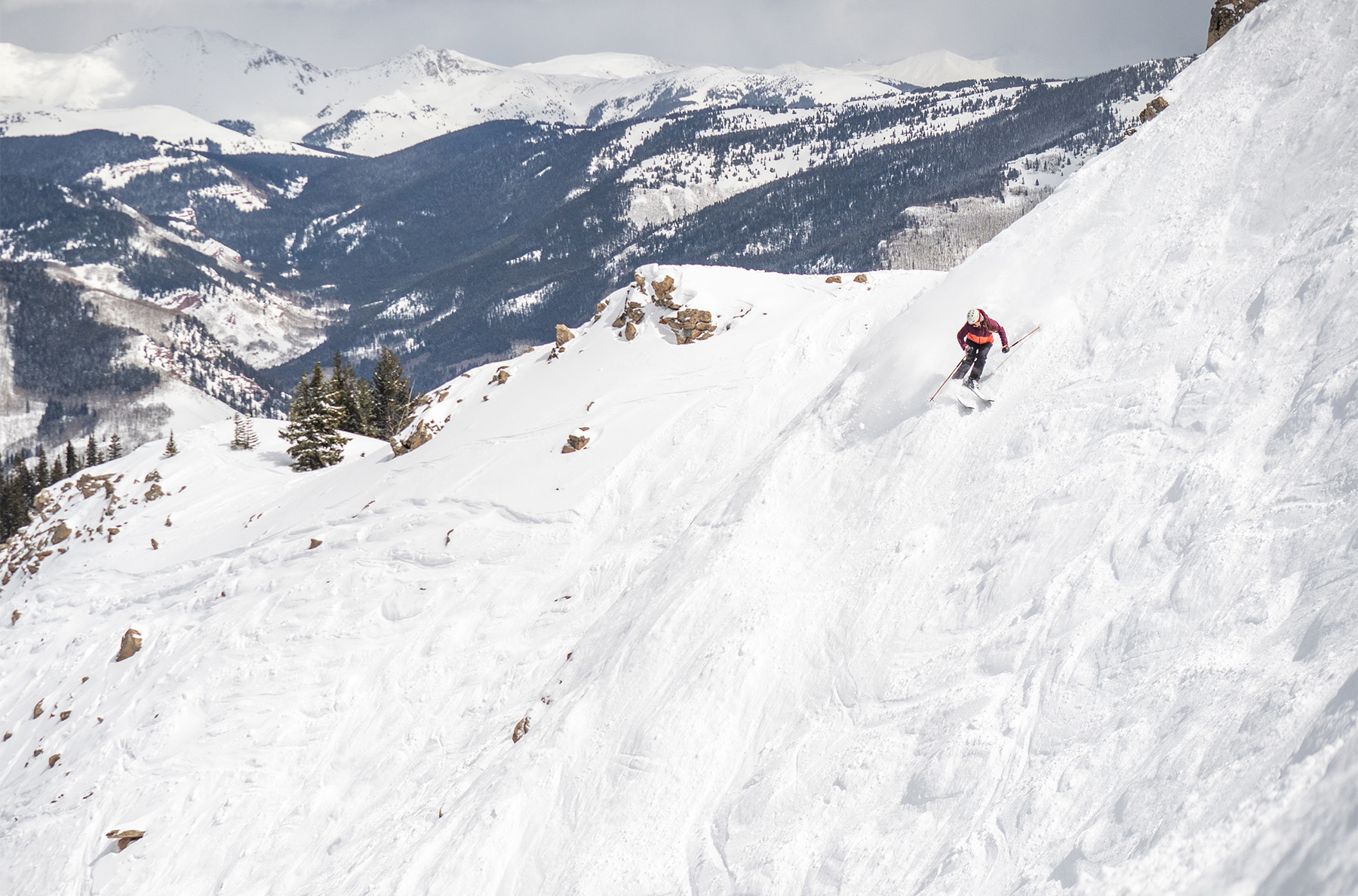
Bottom Line
The Peak 104 by Bode is a versatile all-mountain ski that brings much of the narrower, more precise Peak 98’s performance to a wider and more maneuverable package.
Deep Dive Comparisons
Become a Blister Member to check out our Deep Dive comparisons of the Peak 104 by Bode to see how it compares to the Peak 98 by Bode, Peak 104 by Dav, K2 Mindbender 99Ti, Rossignol Sender 104 Ti, Fischer Ranger 102, Atomic Maverick 100 Ti, Armada Declivity 102 Ti, Salomon QST 106, K2 Mindbender 106C, Volkl Manrta 102, HEAD Kore 105, Shaggy’s Ahmeek 105, Elan Ripstick 106, J Skis Hotshot, Blizzard Rustler 10, Black Crows Atris, Line Blade Optic 104, Volkl Secret 102, Rossignol Rallybird 104 Ti, & Nordica Santa Ana 104 Free.

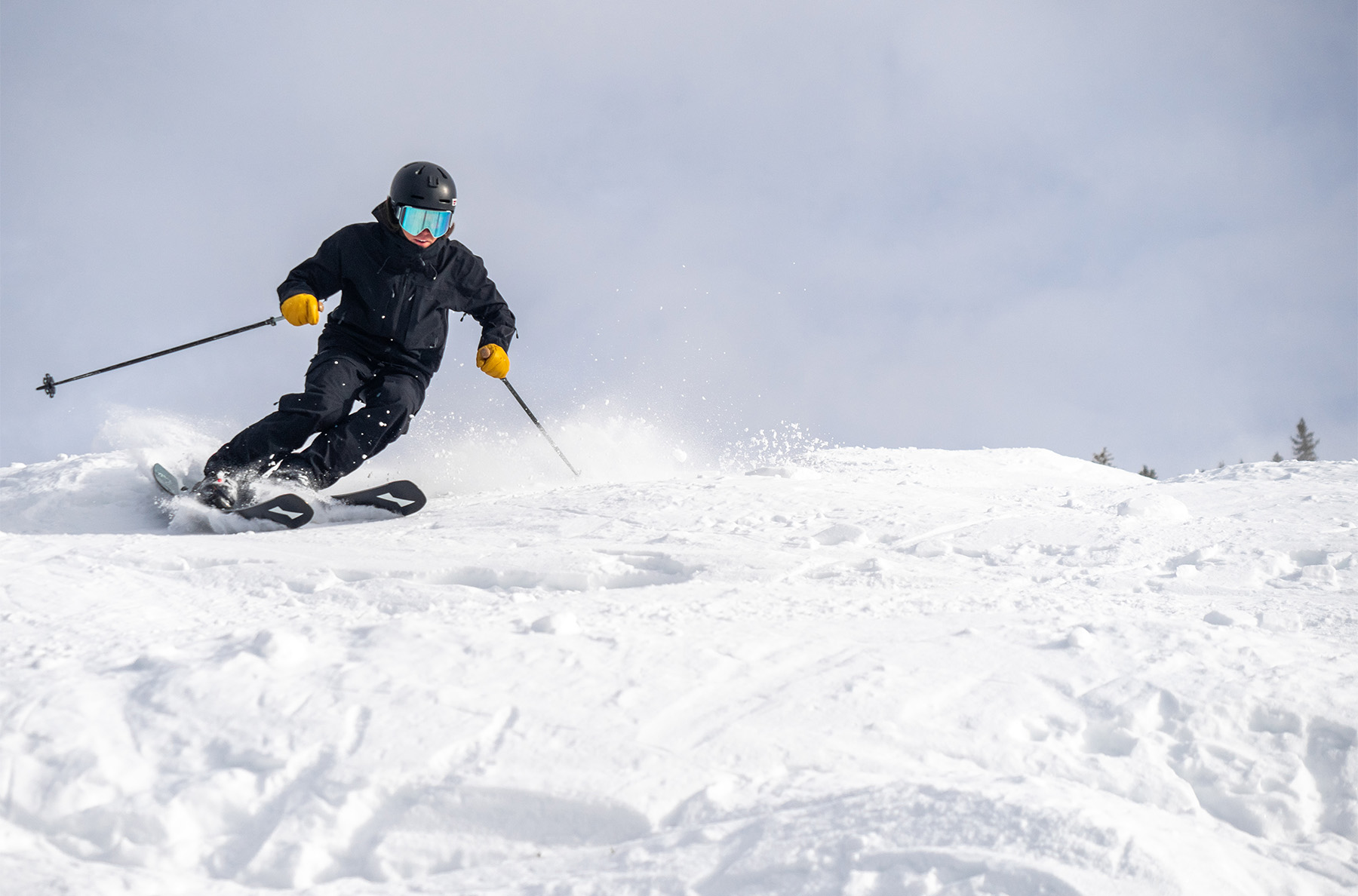


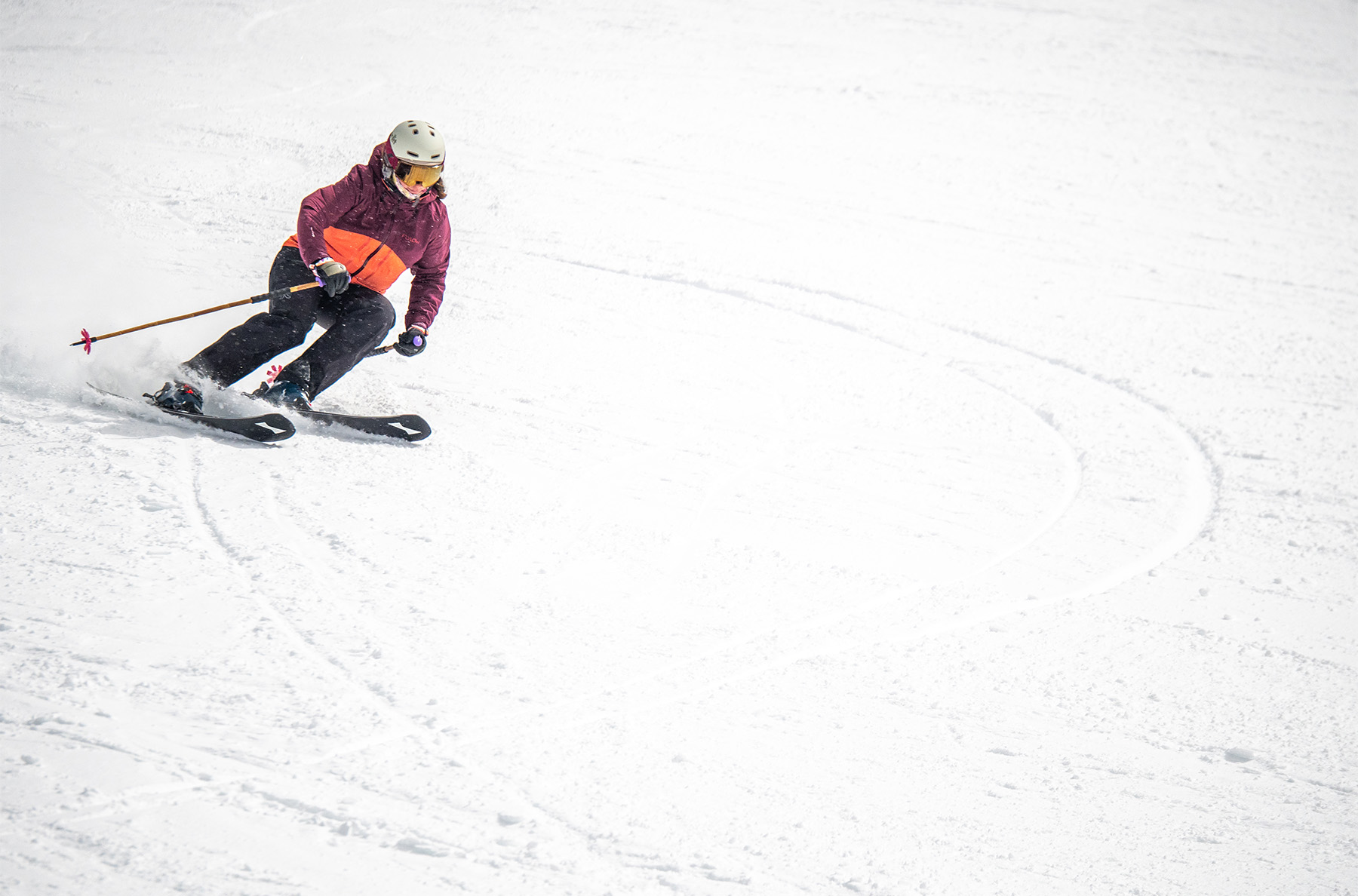
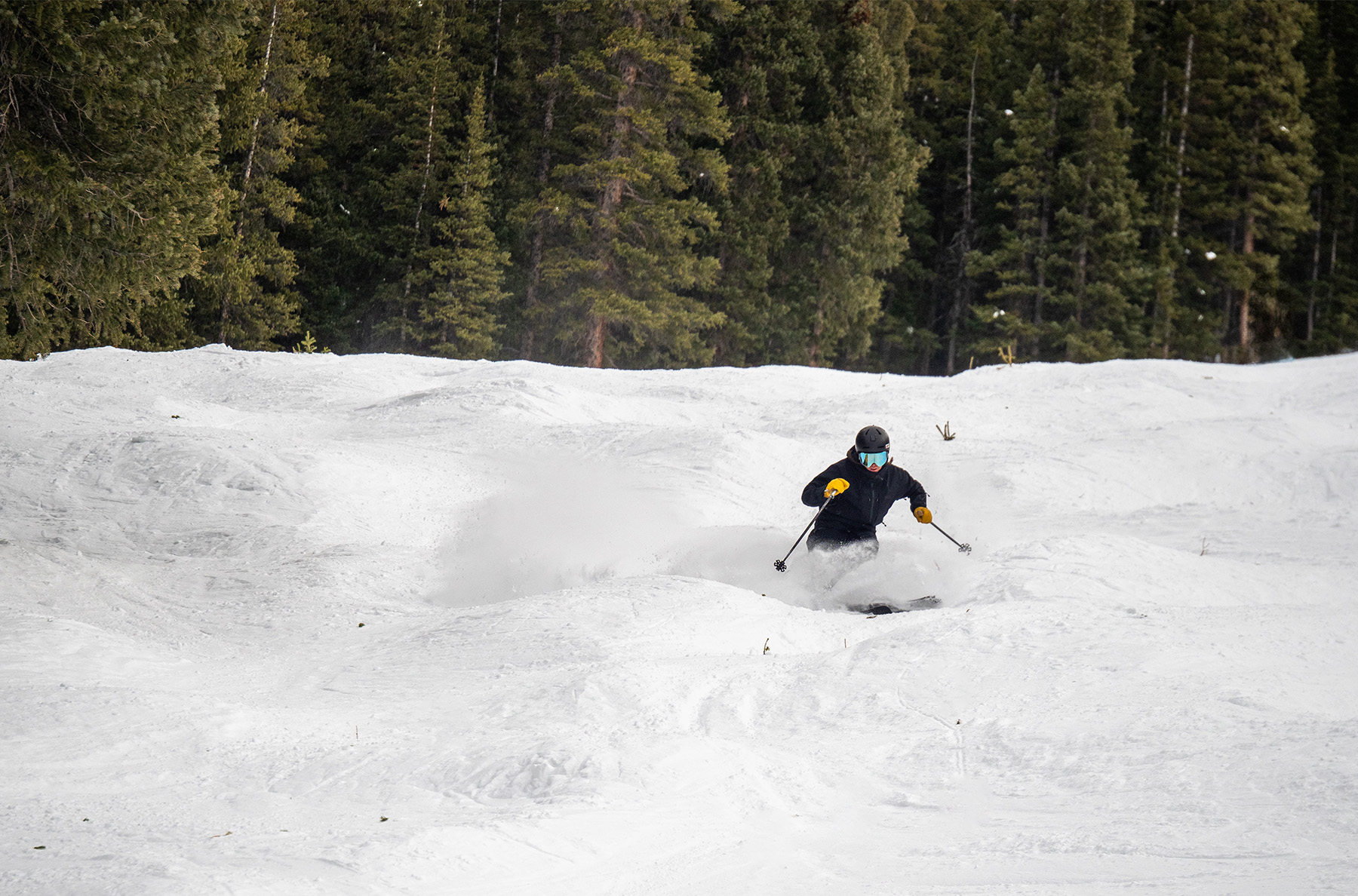
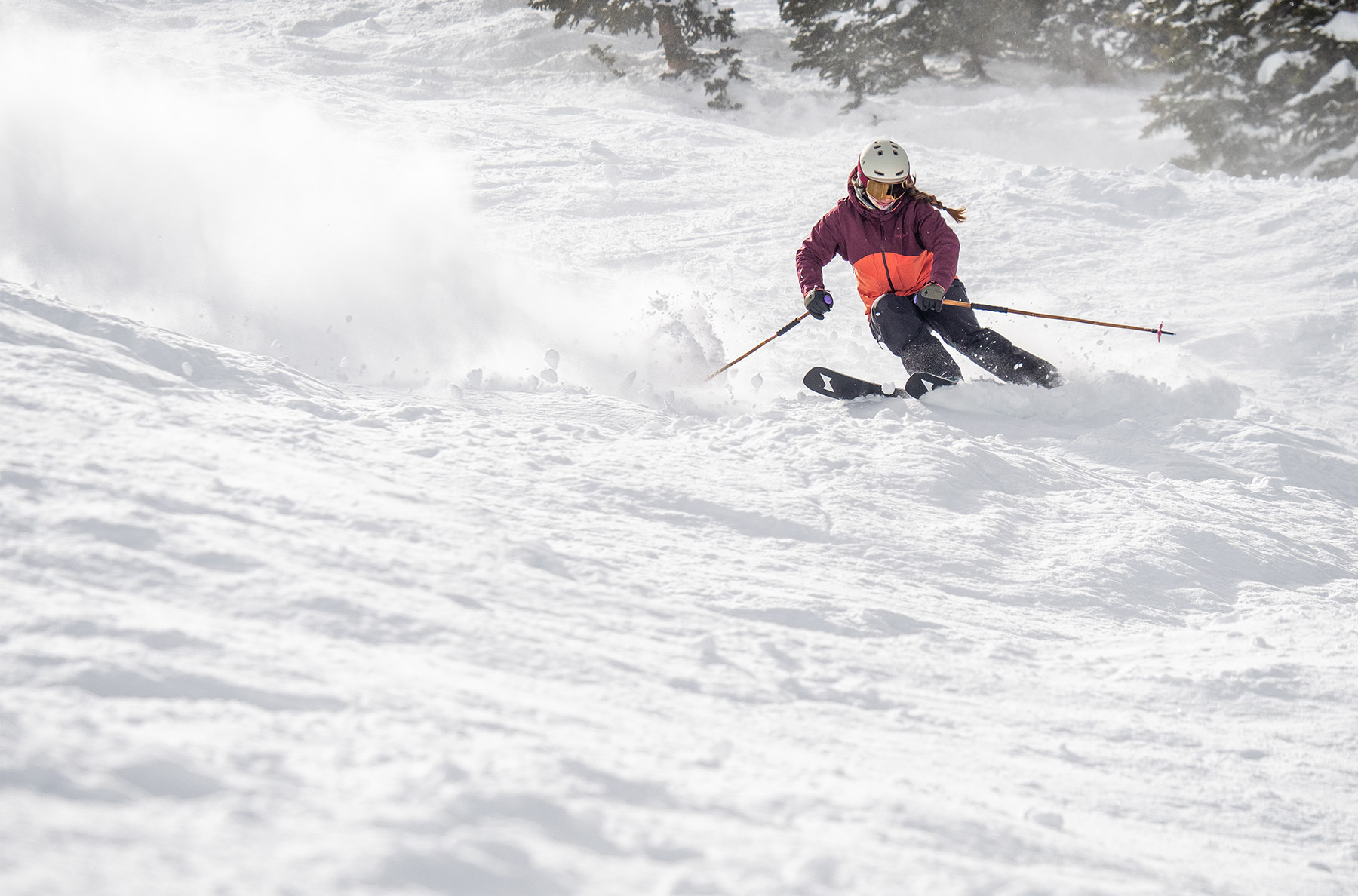
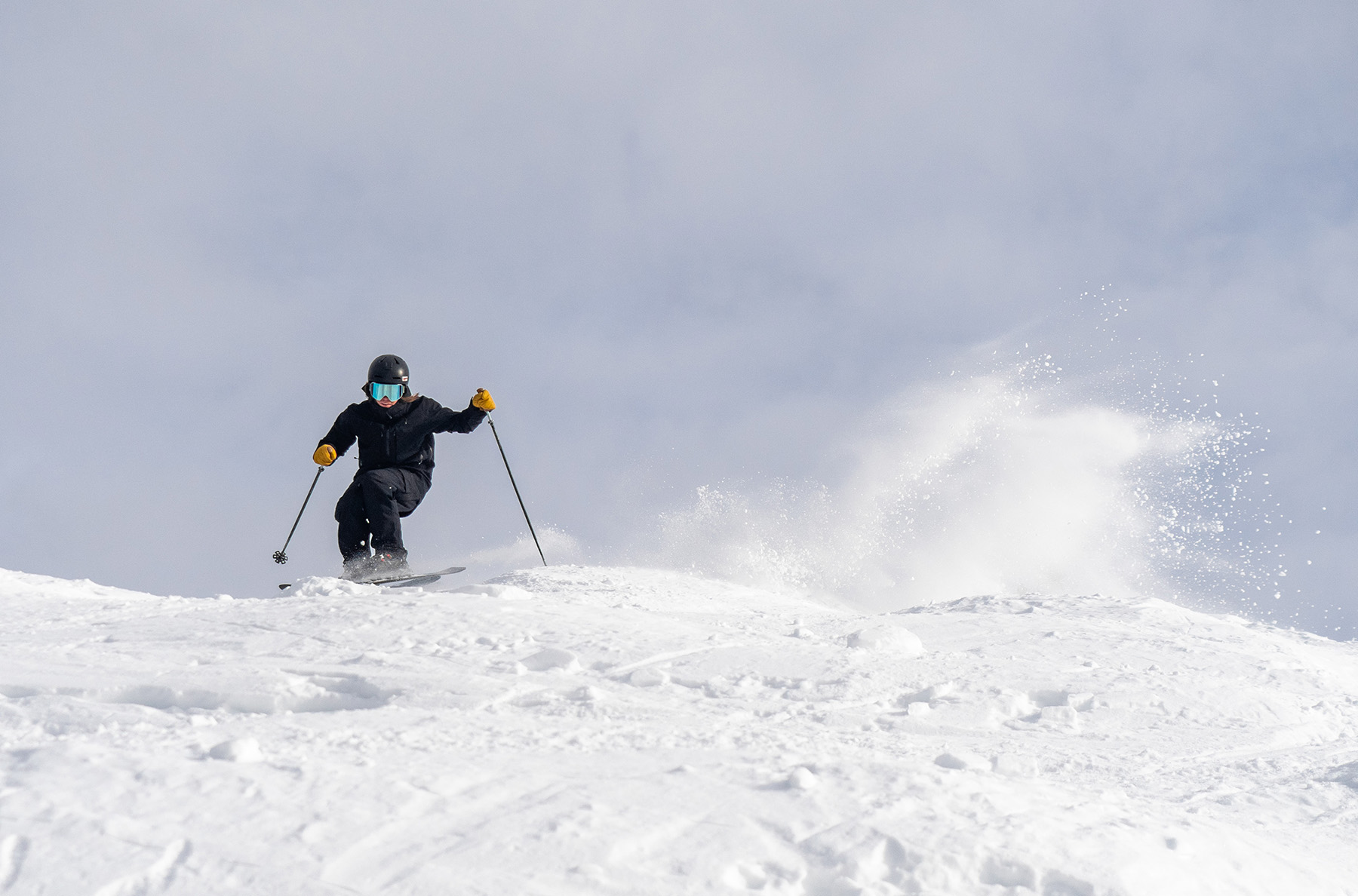
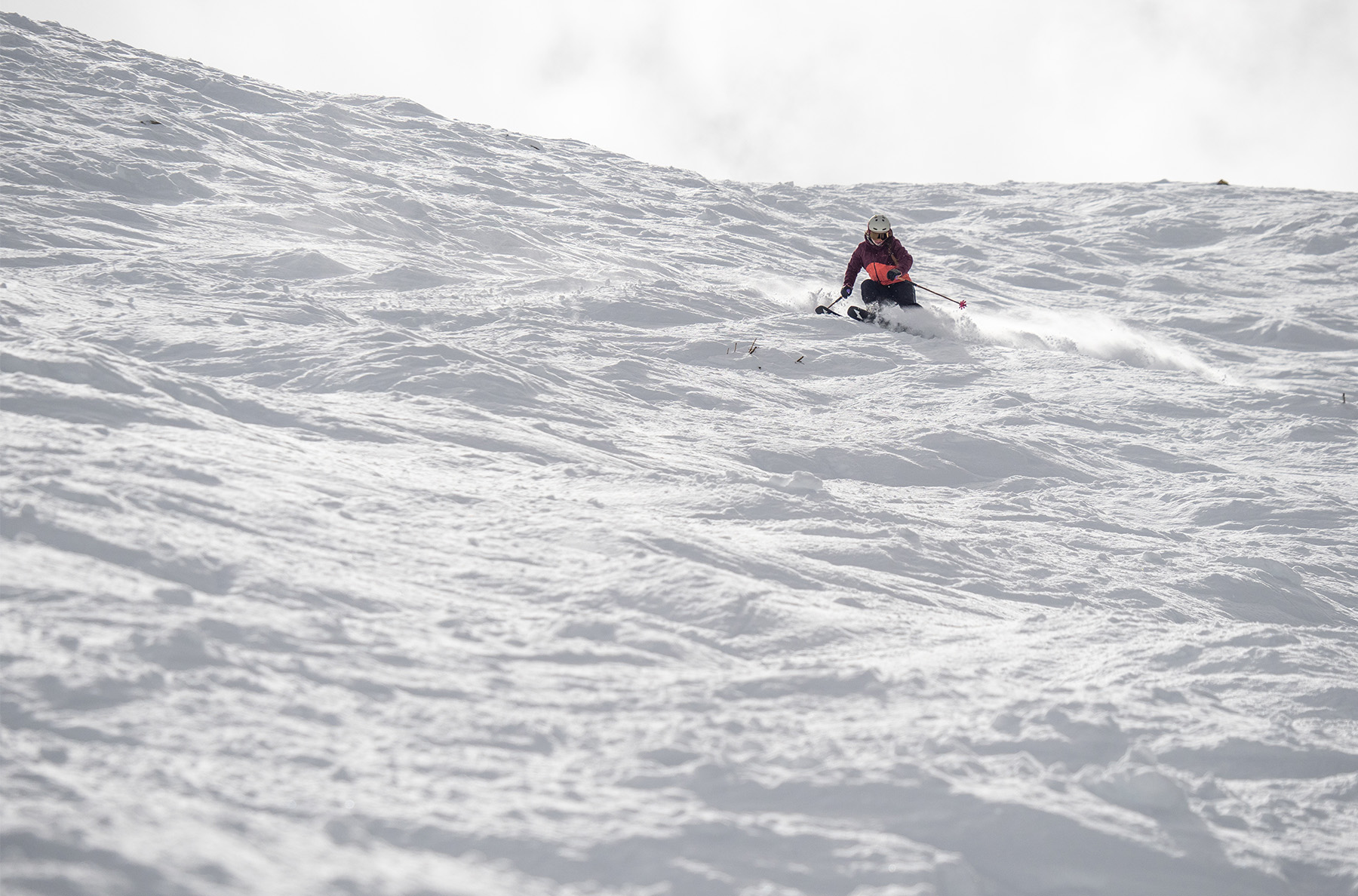
Nice to see ski companies still making skis designed around traditional mount points and forward body language.
Same. Love it. All the best luck to Peak in this so-far-skinny snow year!
I usually ski a ski that is 184 – 185 range but Bode told me to use the 178 Peak 98’s and after trying both he was spot on. Luke you should try the shorter 178 length, especially in the 98’s